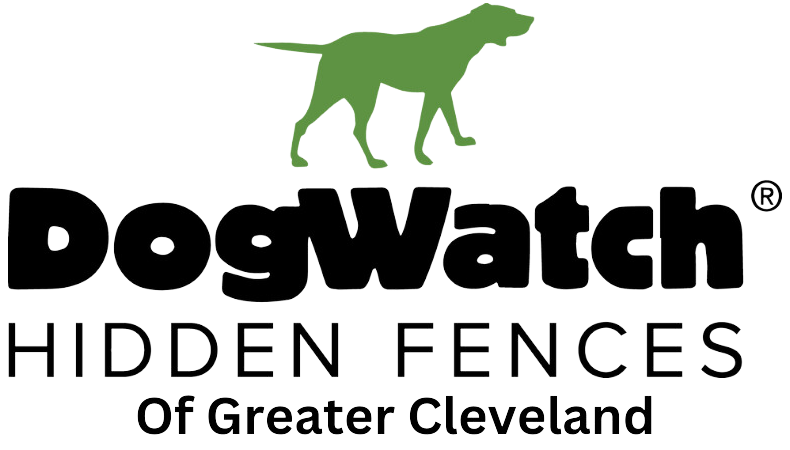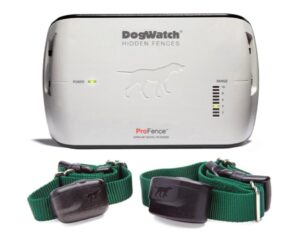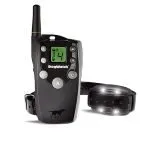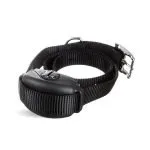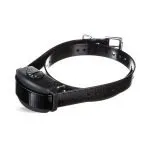Expert Hidden Fence Training Tips for Your Pet

Maximize the value of your DogWatch® purchase by implementing these useful training suggestions. If you can't locate a solution to your inquiry here, explore our DogWatch Troubleshooting recommendations, consult your Owner's Guide, or get in touch with us for assistance.
- Hidden Fence Training Guide: A comprehensive training manual encompassing in-depth guidance for all Hidden Fence systems.
- Abbreviated Hidden Fence Training Guide: A condensed, single-page general training guide suitable for all Hidden Fence systems.
Your DogWatch Dealer will introduce you and your dog to the training program and will provide some initial training. Following this initial training, you will need to reinforce the training for several weeks.
Place the DogWatch collar on your dog and walk the dog with the a leash to different areas of your yard near the boundary flags reinforcing that the flags are a “Watch-Out” (or whatever you use as an avoidance word). Do this several times a day for at least four to five days. Using a leash during this part of training is important because you must be able to pull the dog away from the flags if he gets a warning or a correction. Praise the dog for retreating from the flags.
For your pet training program to be successful, the keys are consistency and repetition. Praise the dog immediately upon re-entering the safe zone.
Do not allow your pet to run freely in the yard during the training period, and avoid leaving the property for walks unless you leave by car or carry the dog over the boundary. This is to prevent confusing the dog about leaving the yard. Remember to remove the receiver collar before leaving the yard.
After the dog has a good understanding of the audible warning, release the animal for short periods of time unattended. Observe your dog and be prepared to reinforce the verbal “Watch Out” should the dog venture too near the boundary. Gradually increase the time your pet is allowed outdoors unattended for the first few weeks.
- For your pet training program to be successful, the keys are consistency and repetition.
- Praise the dog immediately upon re-entering the safe zone.
- Do not allow your pet to run freely in the yard during the training period.
- Avoid leaving the property for walks unless you leave by car or carry the dog over the boundary.
- Remove the receiver collar before leaving the yard.
- After the dog has a good understanding of the audible warning, release the animal for short periods of time unattended.
- Observe your dog and be prepared to reinforce the verbal “Watch Out” should the dog venture too near the boundary.
- Gradually increase the time your pet is allowed outdoors unattended for the first few weeks.
- Collar Fit Is Critical!
- When you take the dog off your property, remove the collar and attach the leash.
- Always leave the property from the same spot in the yard, such as the driveway or sidewalk.
- Suggest that you “go for a walk” to encourage the dog to follow you.
- The dog may hesitate the first few times you leave the yard.
- Another option is to set a towel or cloth down between the pet containment flags.
- Ask your dog to sit.
- Place the towel on the ground then cross through the flags with the dog on the leash.
- Give him a command to cross such as “Safe Cross”.
- Go for a walk.
- When you return, repeat the process and when you get to the other side of the flags, ask your dog to sit and pick up the towel.
- When you bring him in the house, snap the DogWatch receiver collar on your dog and bring him out to the pet containment flags to remind him of the boundary.
- Hidden Fence Training Guidelines can be found in your DogWatch Owner’s Guide.
- Attitude and Consistency is Important!
- Keep the training “light”. Use lots of praise. Keep the dog’s spirits high.
- Use high happy tones for praise. Use low tones for negative commands.
- Move around the boundary in the same direction.
- Reinforce the boundary with commands. Use the commands “Watch Out!” or “Careful” as you slap or shake the flags.
- Limit the training session to no more than 20 minutes. Keep training consistent.
- Keep your dog on the lead in the yard for five days.
- If you are training more than one dog, train each dog separately.
- Use naturally occurring distractions such as a neighbor or children.
- Contact Us if you have any questions about our pet training systems.
- Proper training is essential for successful containment. If you have any questions about training, or if you have questions about your dog’s behavior during training sessions, please Contact Us.
- Safety Zone: This is the area where the dog is free to play.
- Avoidance Zone: This is the signal field created by the boundary wire. When your dog crosses the signal field, the receiver collar emits an audible warning followed by a correction. When containment training is complete, your dog will remain in the Safety Zone.
- Never walk your dog all the way through to the other side of the hidden fence zone during a training session.
- Always reinforce the retreat concept by shaking the flags while saying “Watch out!” when your dog receives an audible warning or a correction during a training session.
- Adjust the receiver collar, test the battery regularly, and keep the contact posts clean.
- After the training period, your dog may wear the receiver collar during the day, but remove it at night.
- Closely monitor your dog’s neck area and make sure there is no irritation.
- Keep the training consistent: 10 to 15 minutes up to three times a day.
- Internationally known Animal Behavior Therapist and Trainer, Raymond J. McSoley, helped DogWatch Inc. develop our dog training system and continues to be a strong DogWatch supporter.
- Read his testimonial on DogWatch products.
- In his book Dog Tales, Ray outlines seven rules for dog ownership which he conveys to every client before working with them.
- These rules also form the foundation for our dog training system philosophy.
Rule 1
You must be responsible for learning to communicate with your dog.
Rule 2
You must be the leader and the dog the follower – there’s no room for equality in the dog’s mind.
Rule 3
If you’re not teaching the correct behavior, then you’re teaching the wrong behavior, because you’re always teaching the dog something.
Rule 4
You must be consistent in dealing with your dog.
Rule 5
Don’t expect your dog to know the difference between right and wrong. He is not a little person in a fur coat.
Rule 6
You must be certain your dog understands why he is being corrected.
Rule 7
Reward your dog for the proper behavio
